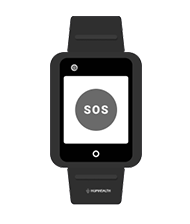The purpose of the AWV is to review the patient’s wellness and
develop a
personalized prevention plan.


1. Acquire Beneficiary information
- a. Administer HRA
- b. Establish the beneficiary’s medical/family history
- c. Review the beneficiary’s potential risk factors for depression, including current or past experiences with depression or other mood disorders
- d. Review the beneficiary’s functional ability and level of safety
2. Begin Assessment
- a. Health Risk Assessment 1) CAGE Questionnaire 2) Activities of Daily Living 3) Instrumental Activities of Daily Living
- b. Cognitive impairment assessment
- c. PHQ-2 and PHQ-9 Depression assessment
3. Counsel Beneficiary
- a. Establish a written screening schedule for the beneficiary, such as a checklist for the next 5 to 10 years, as appropriate
- b. Establish a list of risk factors and conditions for which the primary, secondary, or tertiary interventions are recommended or underway for the beneficiary
- c. Furnish personalized health advice to the beneficiary and appropriate referrals to health education or preventive counselling services or programs
- d. Furnish, at the discretion of the beneficiary, advance care planning services

Key Features
Health Risk Assessment
Cognitive impairment assessment
PHQ-2 and PHQ-9 Depression assessment
Functional Ability and Level of Safety
Beneficiary Checklist for the next 5 to 10 years
Auto Generation of Recommendations
HCPCS Codes and Descriptors
- HCPCS Code
- Billing Code Descriptors
- Average Reimbursement
-
HCPCS Code
G0438
-
Billing Code Descriptors
Annual wellness visit; includes a personalized prevention plan of service (PPS), initial visit -
Average Reimbursement
$175.32
-
HCPCS Code
G0439
-
Billing Code Descriptors
Annual wellness visit, includes a personalized prevention plan of service (PPS), subsequent visit -
Average Reimbursement
$119.16
















